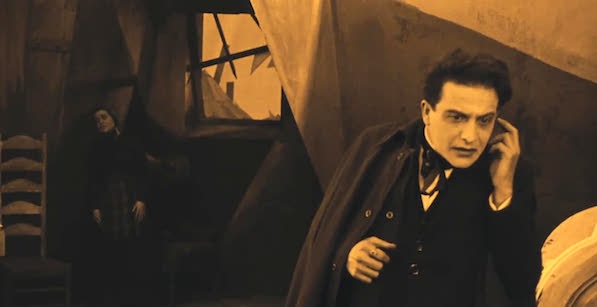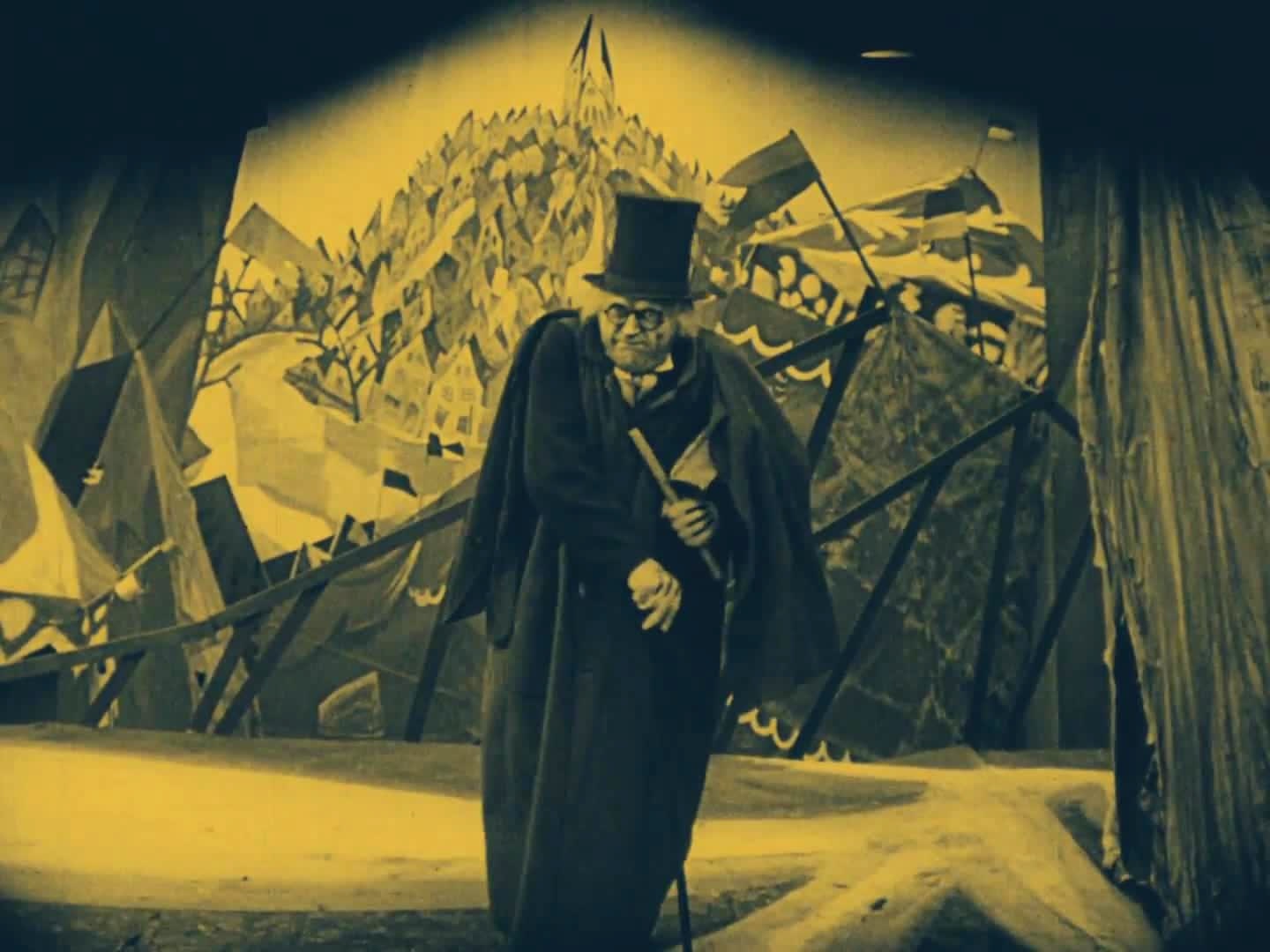[Editor’s note: While the new restoration of The Cabinet of Dr. Caligari plays at Film Forum it is unavailable to Fandor viewers in the New York metropolitan area.]
“Scenery of the soul.” These are the words that film scholar Siegfried Kracauer summoned to describe what made The Cabinet of Dr. Caligari such a massive sea change in mainstream filmmaking when it emerged from the ravages of post-World War I Germany. Until then, cinema was largely understood as a fantastic new medium through which reality could be captured and presented more completely and perfectly. These realities were largely understood to be external: the social relations between people set within the actualities of places and things. But what if film could project what was inside of us: our emotions, fantasies and fears? This was the breakthrough of Caligari, carrying the larger movement of German Expressionism into the cinematic realm, while unleashing a new strain of filmmaking with an intensely subjective power not seen before: the horror movie.
Kracauer, one of Germany’s most highly regarded social and cultural critics in the first half of the 20th century, was a regular film reviewer in the 1920s and 1930s, and thus had a front row seat to the evolution of his nation’s cinema leading to the rise of Nazism. Kracauer fled Nazi Germany and ultimately settled in the United States, where he compiled his reflections on early Germany cinema in a landmark book, From Caligari to Hitler: A Psychological History of the Germany Film. Never before had a film writer made as compelling an diagnosis of a nation’s movies as a reflection of their collective psychology, with Caligari serving as a prime case study. This video essay applies some of Kracauer’s most key insights directly upon the film, so that we might see the film through the eyes of one of cinema’s earliest and most influential scholars.
Watching the video, it is fascinating to see how many of the elements of German Expressionism that Kracauer identifies serve as the building blocks for horror filmmaking. Kracauer points out distressed gothic images and patterns; visual themes of tyranny and the chaos and confusion created in struggling with oppressive forces; a reliance on interior sets generating a claustrophobic aura; and perhaps most importantly, the mobilization of light to create an unearthly atmosphere reflecting the dark spaces of the soul. But serving as more than just a horror movie how-to, Kracauer’s insights into these techniques extend into understanding why these effects might appeal to an audience in the first place, as signposts of our cultural psychology.
To Kracauer, Caligari’s total reliance on interior sets with little concern for matching external reality reflected his countrymen’s “general retreat into a shell” in seeking an escape from the horrors of World War I. “Once the Germans had determined to seek shelter within the soul, they could not well allow the screen to explore that very reality which they abandoned.” This rejection of reality and withdrawal into the dark solace of fantasy would eventually lead to a collective embrace of the fantasies of social superiority promoted by Hitler and Nazism, eventually plummeting the world into an even more horrific war.
In an important update to Kracauer’s findings, film scholar Thomas Elsaesser argues in his 1999 book Weimar Cinema and After that the makers of Caligari may not have been solely inspired by artistic innovation, but by more practical matters. Producer Erich Pommer embraced the expressionistic use of darkness and sets painted with abstract shadows as a way to save on production costs, as electricity in post-war Germany was expensive. Additionally, the German movie industry was seeking its own national style of filmmaking as a way to differentiate its product from those of other nations, particularly the increasingly dominant productions from the U.S. Such motivations of cost and competition can be seen time and again in horror filmmaking, from the Val Lewton low budget productions of the 1940s to Blair Witch-inspired home video look of the present. At the same time, these motivations do not necessarily discount Kracauer’s psychological account for movies as a reflection of cultural mindsets. As with the Expressionist cinema itself, reality isn’t always found in the realm of objective facts, but often lurks in the shadows of subjective feelings.
Kevin B. Lee is a filmmaker, critic, video essayist and founding editor of Keyframe. He tweets at @alsolikelife.





